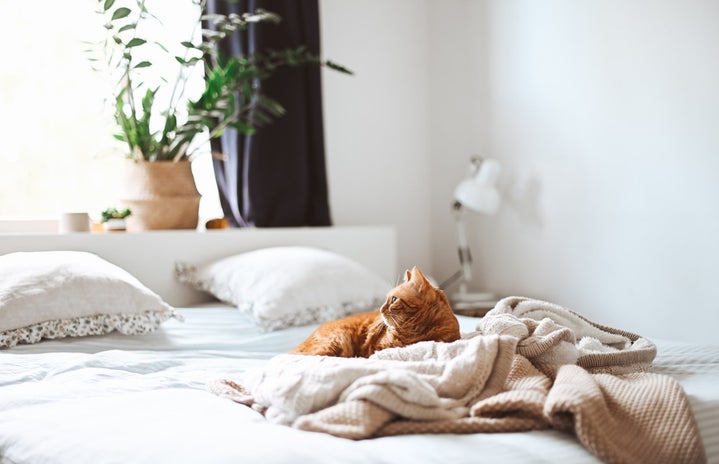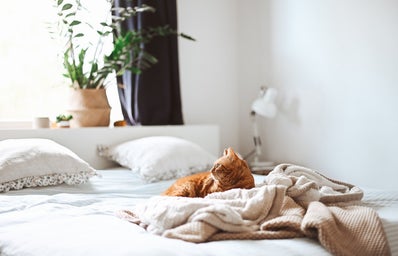As a chronically sleep-deprived college student, there’s no feeling quite like crawling back into bed after a morning of Zoom classes. I’ll admit it: I came to college and became a serial napper. In high school, I never napped consistently. Occasionally, I’d doze off after finishing my homework and wake up 3 hours later to a missed dinner and an evening lost.
When I napped, I didn’t do it correctly. I’d wake up feeling groggy and go to bed later that night feeling alert, leading to sleepless nights and tired mornings. This quickly changed as I transitioned to life as a college student. With infinitely more demanding coursework and many late nights in the library, I found that there was only so much a constant supply of caffeine could do for me; I needed to learn how to nap. Following several rounds of trial and error, I finally found the nap style that worked for me: I like twenty-five-minute power naps. I like low, natural lighting and don’t like complete darkness. Some noise is ok, but I prefer quiet and I prefer being alone. I like napping in the beginning of the afternoon but hate napping in the late afternoon.
While there’s no perfect nap, there are approaches we can take to figuring out what works for us, both scientifically and subjectively. More generally, naps are a great addition to the day, even if you don’t feel particularly tired. According to an American Psychological Association feature on the science of naps, midday napping in Google workspaces boosted employee productivity and creativity. In a University of Michigan study, people who woke up from a 60-minute midday nap were less impulsive and had a greater tolerance for frustration. A University of California Berkeley study concluded that participants performed better on a memory recall test following a 90-minute nap. Consistently, research suggests that naps should be an essential component of our days. If you’re looking for improved memory, patience and energy, naps may be your answer.
Now that we’re familiar with the health benefits of napping, how do we make the best use of our naptimes? The American Psychological Association proposes that short midday naps provide the jolt of energy that many of us are looking for when we nap, as they do not allow us to fall into deeper sleep cycles. Longer naps run the risk of inducing deep sleep, leaving us with a groggy feeling, and later naps run the risk of interfering with our night sleep schedules. Our bodies have a much more difficult time waking up from REM (deep) sleep than they do from lighter stages of sleep; this is why we often wake up from two-hour long naps feeling exhausted. While choosing shorter naps, it’s also important to make them part of a routine. People who nap infrequently tend to slip into deep sleep, so frequent napping helps to optimize napping benefits. People who identify as night owls also reap greater benefits of napping. A night owl myself, I can attest to this.
Although short-midday naps are a foolproof method for effective napping, there are plenty of variations. I cannot stress enough the importance of experimentation; you never know what works for you until you try it. In my junior year AP Lang class, I was stunned when my teacher shared her go-to nap style: a napucchino. She always drank coffee before taking a 20-minute power nap and woke up feeling extra energized. I tried it and ended up loving it. I still use this hack today.
Whether you decide to add power naps to your Google Calendar or you doze off shortly after reading this, I hope this guide helps you to take your naps to the next level. Happy napping!
Source: American Psychological Association


